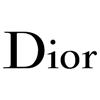Case Study: Dior’s Haute Couture Crowdsourcing summarizes my notes from his insights at SNC London 2009.
Michel Campan, Director, Client Marketing at Christian Dior Couture
 Michel Campan offered a fascinating and surprising look behind the scenes of one of Dior’s major social media initiatives. He showed part of a short film, The Lady Noir Affair, whose screenplay and plot were written by fashion bloggers, and it starred Marion Cotillard and was directed by Olivier Dahan. Amazingly, the cost was roughly that of a (print) advertisement in a major publication. However, the engagement with people who matter cannot be compared.
Michel Campan offered a fascinating and surprising look behind the scenes of one of Dior’s major social media initiatives. He showed part of a short film, The Lady Noir Affair, whose screenplay and plot were written by fashion bloggers, and it starred Marion Cotillard and was directed by Olivier Dahan. Amazingly, the cost was roughly that of a (print) advertisement in a major publication. However, the engagement with people who matter cannot be compared.
Read on for a case study Michel presented on my panel at the Social Networking Conference London 2009, Enterprise Social Networking for Innovation: Case Studies, Approaches and Tools.
Case Study
 Michel has represented numerous luxury brands, and he was voted by peers as the “E-Commerce Man of the Year” in France last year, so he speaks from a broad perspective. Dior’s haute couture clientele is conservative, prizes discretion and interacts very little in social networks; however, they do appreciate the points of view of fashion bloggers who provide behind the scenes tidbits of emerging trends. Therefore, Dior gives bloggers exclusive or restricted information to share, which drives traffic to their blogs and increases enagement with the brand. Dior’s success in creating mutually rewarding relationships with bloggers drove them to take it to another level with The Lady Noir Affair.
Michel has represented numerous luxury brands, and he was voted by peers as the “E-Commerce Man of the Year” in France last year, so he speaks from a broad perspective. Dior’s haute couture clientele is conservative, prizes discretion and interacts very little in social networks; however, they do appreciate the points of view of fashion bloggers who provide behind the scenes tidbits of emerging trends. Therefore, Dior gives bloggers exclusive or restricted information to share, which drives traffic to their blogs and increases enagement with the brand. Dior’s success in creating mutually rewarding relationships with bloggers drove them to take it to another level with The Lady Noir Affair.
When Dior decided to make Lady Noir, they reached out to a select group of bloggers who were highly engaged and well read. They explained the concept and asked them to weave the Hitchcockian story which, of course, highlighted the Lady Dior bag. Cotillard and Dahan loved the story and the process, too. When the six minute film came out, it created tremendous viral buzz (200,000 mentions in the first week). It was one of the first Internet feature films produced by a major luxury fashion brand.
Getting Support for Social Network Initiatives
- Introducing social networking to Dior and other brands with which Michel has worked has not been easy because fashion is a very conservative industry. It has been challenging to open it up using social networks.
- Fashion executives prize their trusted relationships with editors and advertising executives of major media brands, and the lack of control that characterizes Web 2.0 makes them hesitant to adopt.
- Fashion is a very emotional industry. Michel gets things done by using a personal approach and networking with executives’ personal influencers (let’s just say an influential younger generation ,^). Don’t underestimate the option of approaching highly trusted influencers.
- Michel has tried to use a quantitative approach to building support for social network initiatives, but he stated definitively that the numbers approach does not work, no matter how well researched or presented.
- It is difficult to convince management to let go of yesterday’s conventional thinking and ways of working because the company has succeeded with the old way.
- One challenge is that “the old way” has diminishing returns; Michel related that social media is becoming more influential and it is the only marketing investment that is increasing; it is very promising, and the investment is modest compared to legacy approaches (print, television).
That said, I’m sure that the success of Lady Noir will certainly go a long way in demonstrating the value of social networking! Three more installments in the series are in the works (Lady Rouge Affair due Christmas).

[…] original here: Case Study: Dior’s Haute Couture Crowdsourcing Tagged with: […]
[…] This post was mentioned on Twitter by Christopher Rollyson and Christopher Rollyson. Christopher Rollyson said: RT @snroadmap: Dior’s Couture 2.0: Useful story of high fashion crowdsourcing http://bit.ly/32Dqu7 http://ff.im/-9Kvvm […]
Interesting case. I see some strengths, but have some questions as to the true social nature of this effort.
Pros: This struck me as a program very much in keeping with the “couture” and “fashionista” brand character, as well as the French character of the Dior brand. Nice integration of the Lady Dior handbag, too (looks like a beautiful bag…and that coming from a guy!). I also found interesting the outreach to the bloggers to help create the film (talk about co-opting your influencers!) and that they were able to get Cotillard and Dahan on board for such little money. And, the film itself is quite fetching. If Michel had to fight the entrenched management to get this done, I’d say he made some
Performance: I guess if they got “200,000 mentions” that would qualify as some degree of viral success (don’t know the metrics for this category, but I’ll assume that the thresholds would be lower given it’s a high end, luxury target). It would be interesting to know more about the QUALITY of those mentions. All tweets are not created equal; there’s a big difference between, “OMG…check out this vid. Gorgeous film, gorgeous Dior bag!” and “WTF is Dior thinking. Waste of money and my time – stupid!”
Cons: On the con side, this feels to me more like a PR tactic/stunt to generate buzz than listening, fitting in and connecting the Brand with its social community. Reach out to the influencers (the bloggers), shmooze them, get them involved (in a way that magazine editors would never do…guess that’s the advantage of using bloggers), post a video and see if they can get it to go viral and get mentions. Make sure to feature that product prominently. To me, that feels like an old formula with an assist from new technology (bloggers vs. print editors, online video vs. tv comm’ls or print editorial).
BTW, the above comment goes out the window if the community is the actors, directors, etc. involved in this kind of effort (from what else I read, it sounds like Cotillard herself was very “into this effort and recruited Dahan to direct the film).
Also, one of the points I found most interesting could also be the most troublesome. Engaging the bloggers as they did is “using” the community influencers in a very literal way (which to me feels insincere, disingenuous and self-serving for a Brand). I also wonder about the “ethics” of a blogger being so directly involved in the marketing efforts of a brand they might be covering or commenting on in a post. Seems kind of smarmy to me…reduces the credibility of the blogger in the community and could backfire for a brand. Then again, the fashion world dances to a totally different beat, so this may not be as big an issue in that category/community.
So, in summary, nice looking tactic. I’d like to understand the objectives and strategy underlying this effort, as well as how other components were integrated to make this a holistic effort. And, some more results would be nice, too.
Interesting case. I see some strengths, but have some questions as to the true social nature of this effort.
Pros: This struck me as a program very much in keeping with the “couture” and “fashionista” brand character, as well as the French character of the Dior brand. Nice integration of the Lady Dior handbag, too (looks like a beautiful bag…and that coming from a guy!). I also found interesting the outreach to the bloggers to help create the film (talk about co-opting your influencers!) and that they were able to get Cotillard and Dahan on board for such little money. And, the film itself is quite fetching. If Michel had to fight the entrenched management to get this done, I’d say he made some good progress in getting this produced and distributed.
Performance: I guess if they got “200,000 mentions” that would qualify as some degree of viral success (don’t know the metrics for this category, but I’ll assume that the thresholds would be lower given it’s a high end, luxury target). It would be interesting to know more about the QUALITY of those mentions. All tweets are not created equal; there’s a big difference between, “OMG…check out this vid. Gorgeous film, gorgeous Dior bag!” and “WTF is Dior thinking. Waste of money and my time – stupid!”
Cons: On the con side, this feels to me more like a PR tactic/stunt to generate buzz than listening, fitting in and connecting the Brand with its social community. Reach out to the influencers (the bloggers), shmooze them, get them involved (in a way that magazine editors would never do…guess that’s the advantage of using bloggers), post a video and see if they can get it to go viral and get mentions. Make sure to feature that product prominently. To me, that feels like an old formula with an assist from new technology (bloggers vs. print editors, online video vs. tv comm’ls or print editorial).
BTW, the above comment goes out the window if the community is the actors, directors, etc. involved in this kind of effort (from what else I read, it sounds like Cotillard herself was very “into this effort and recruited Dahan to direct the film).
Also, one of the points I found most interesting could also be the most troublesome. Engaging the bloggers as they did is “using” the community influencers in a very literal way (which to me feels insincere, disingenuous and self-serving for a Brand). I also wonder about the “ethics” of a blogger being so directly involved in the marketing efforts of a brand they might be covering or commenting on in a post. Seems kind of smarmy to me…reduces the credibility of the blogger in the community and could backfire for a brand. Then again, the fashion world dances to a totally different beat, so this may not be as big an issue in that category/community.
So, in summary, nice looking tactic. I’d like to understand the objectives and strategy underlying this effort, as well as how other components were integrated to make this a holistic effort. And, some more results would be nice, too.
[…] post Case Study: Dior’s Haute Couture Crowdsourcing appeared first on Christopher S. Rollyson and […]
[…] References (1) Martin, R. (1999). A Note: Art Fashion, Viktor Rolf. Fashion Theory: The Journal of Dress, Body & Culture, 3(1), 109-120. (2) Rollyson, Christopher (2009). Case Study: Dior’s Haute Couture Crowdsourcing. retrieved 25 May 2014, from http://rollyson.net/case-study-diors-haute-couture-crowdsourcing/ […]